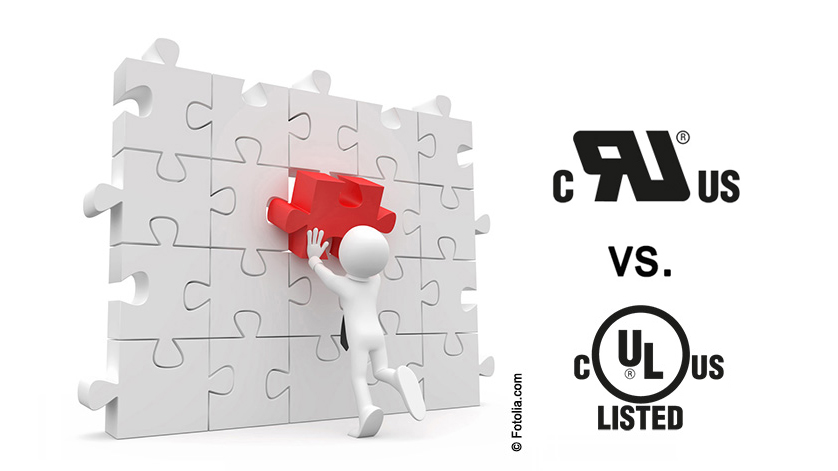
The “UL approval” is an important and well-known product approval. That there are different approvals for “UL” (“Underwriters Laboratories”) is, however, less known.

Fig. left: “UL Listing” marking for Canada and the USA Fig. right: “UL Recognized Component” marking for Canada and the USA
When one talks in general about “UL approval”, in most cases “UL Listing” is meant. In addition to “UL Listing”, however, the approval “UL Recognized Component” can also be obtained for specific products. Depending on which approval is needed for an instrument, an individual marking is required (see figure).
But where does the difference in the two “UL approvals” lie?
Products with “UL Listing” correspond to a final product (end product) or a component for installations in the field. These products have been tested accordingly and can be installed, taking the applicable local installation guidelines into account, e.g. ANSI/NFPA 70, “National Electrical Code” (NEC).
Whereas a product with “UL Recognized Component” is not directly intended for exclusive or direct installation in the field. Rather, as the name of the approval implies, these products are intended as a component of a system for which a “UL Listing” should be obtained. The installation of such components is typically carried out in a factory and not in the field. The product (which is to be considered as a component in the sense of “UL approval”) has passed through certain tests and evaluations for the specific system during the approval as a “UL Recognized Component”, thereby simplifying the “UL Listing” of the complete system.
The WIKA model R-1 pressure sensor for the HVAC +R (heating, ventilation, air-conditioning and refrigeration) industry can be taken as an example. For these instruments, an approval as “UL Recognized Component” for the cooling industry “Component – Controllers, Refrigeration” was obtained. This simplifies the work for manufacturers of refrigeration systems and plants in obtaining the “UL Listing” for the complete unit.

